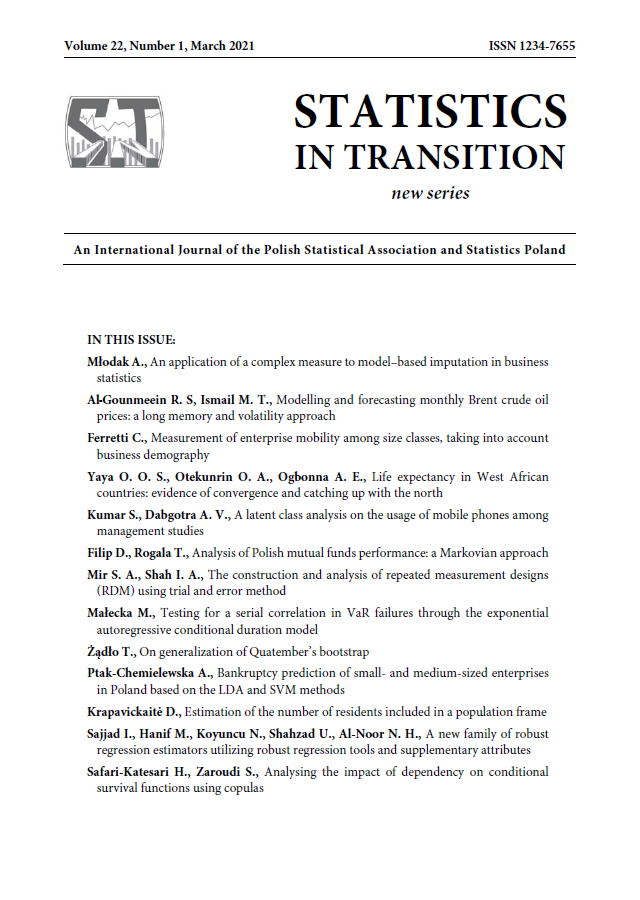ARTICLE
ABSTRACT
Repeated measurement designs prove broadly applicable in almost all branches of biosciences, including agriculture, animal husbandry, botany, zoology. Unbiased estimators for elementary contrasts among direct and residual effects are obtainable in this class of designs, which is considered their important property. In this paper, an attempt was made to provide a new method of overcoming a drawback in the construction method developed by Afsarinejad (1983), where one or more treatments may occur more than once in certain sequences causing the constructed designs to no longer remain uniform in the examined periods. Nine designs were constructed and presented jointly with their corresponding mathematical analyses.
KEYWORDS
residual effects, order effects, balanced minimal RMD
REFERENCES
FUYONG, L., (2011). The inverse of circulant matrix, Applied Mathematics and Computation, DOI: 10.1016/j.amc.2011.03.052.
AFSARINEJAD, K., (1983). Balanced repeated measurements designs, Biometrika, 70, pp. 199–204.
COCHRAN, W. G, COX, G. M., (1986). Experimental Designs, 2nd Ed. Wiley, New York.
WESTLAKE, W. J., (1974). The use of balanced incomplete block designs for experiments involving sequences of treatments. Biometrika, 39, pp. 32–48.
SHEEHE, P. R., BROSS, D. J., (1961). Latin squares to balance immediate residual and other order effects. Biometrics, 17, pp. 405–414.
AFSARINEJAD, K., (1989). Circular balanced repeated measurements design, J. Statist. Prob. Letters., 7, pp. 3985–4027.
AFSARINEJAD, K., (1990). Repeated measurements designs - A review Comm. Statist. Theory, Math., 19(11), pp. 187–189.
HEDAYAT, A., AFSARINEJAD, K., (1975). Repeated measurements design I. In a Survey of Statistical Design and Linear Models, ed. (J. N. Srivastava Ed.) Amsterdam, North Holland, pp. 229–242.
HEDAYAT, A., AFSARINEJAD, K., (1978). Repeated measurements design II, The Annals of Statistics, 6(3), pp. 619–628.
PATTERSON, H. D., (1952). The construction of balanced designs for experiments involving sequences of treatments, Biometrika, 39, pp. 32–48.
WILLIAMS, E. J., (1949). Experimental designs balanced for the estimation of residual effects of treatments, Australian J. Sci. Res. A., 2, pp. 149–168.
BRADLEY, J. V., (1958). Complete counterbalancing of immediate sequential effects in a Latin Square Design, J. Am. Statist. Ass., 53, pp. 525–528.
GORDEN, B., (1961). Sequence in groups with distinct partial product, Pacific J. Math, 11, pp. 1309–1313.
PIGEON, J.G., D. RAGHAVARAO, (1987). Cross-over designs for comparing treatments with a control, Biometrika, 74, pp. 321–328.
KENWARD, M. G., JONES. B., (1987). A log linear model for binary cross over data. Applied Statistics, 36, pp. 192–204.
